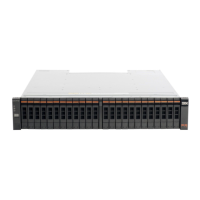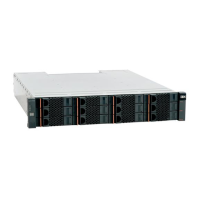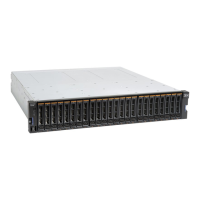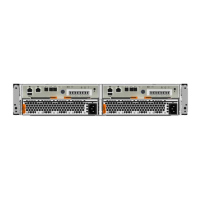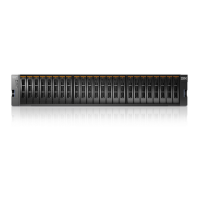Planning Fibre Channel network changes
You must understand the reconfiguration process that is necessary when planning
Fibre Channel network changes.
About this task
Prior to implementation, it is important to understand and plan for the Fibre
Channel network changes.
For each host:
v If Fibre Channel ports 1 and 2 on the node canisters of the control enclosure are
not currently connected to the Fibre Channel fabric, there is no need for Fibre
Channel fabric changes. Otherwise make a list of the Fibre Channel host
systems, storage systems, SAN Volume Controller nodes, and Storwize V7000
nodes that access block volumes on the Storwize V7000.
v For each Fibre Channel host, controller, SAN Volume Controller node, and
Storwize V7000 node, record which Fibre Channel ports on the control enclosure
they communicate through and through which fabric.
v To use a redundant Fibre Channel fabric, determine if node canister port 3 is
already connected to a different fabric than node canister port 4? If not, you can
choose to change the fabric so that port 3 and port 4 do not connect to the same
fabric.
v If a host uses all four Fibre Channel ports on each canister, determine the fabric
zoning changes to make so that it can no longer reach port 1 and port 2 on each
canister.
v If a connection to port 1 or port 2 must be moved to port 3 or port 4, attach
fiber channel port 3 and port 4 of both node canisters to the Fibre Channel
fabric, if needed and plan to use the following procedure to move the
connections with minimum effect on any volume IO.
Procedure
This procedure reconfigures the Fibre Channel hosts to use different Fibre Channel
ports on the Storwize V7000 without disruption to IO. Perform this procedure for
each Fibre Channel zone containing a control enclosure port 1 or a port 2.
1. Add port 3 to the zone.
2. Add port 4 to the zone.
3. Reconfigure the multi-pathing driver to detect the new path, or paths, on each
affected host.
4. Remove port 1 or port 2 from the zone.
5. Reconfigure the multi-pathing drivers to remove the paths to port 1 or port 2,
on each affected host.
What to do next
When all zones and hosts have been reconfigured, and no hosts are connected to
port 1 or port 2 from either node canister, remove the Fibre Channel cable from
port 1 and port 2 on the control enclosure to the Fibre Channel switch ports.
Chapter 2. Planning for adding file modules 7

